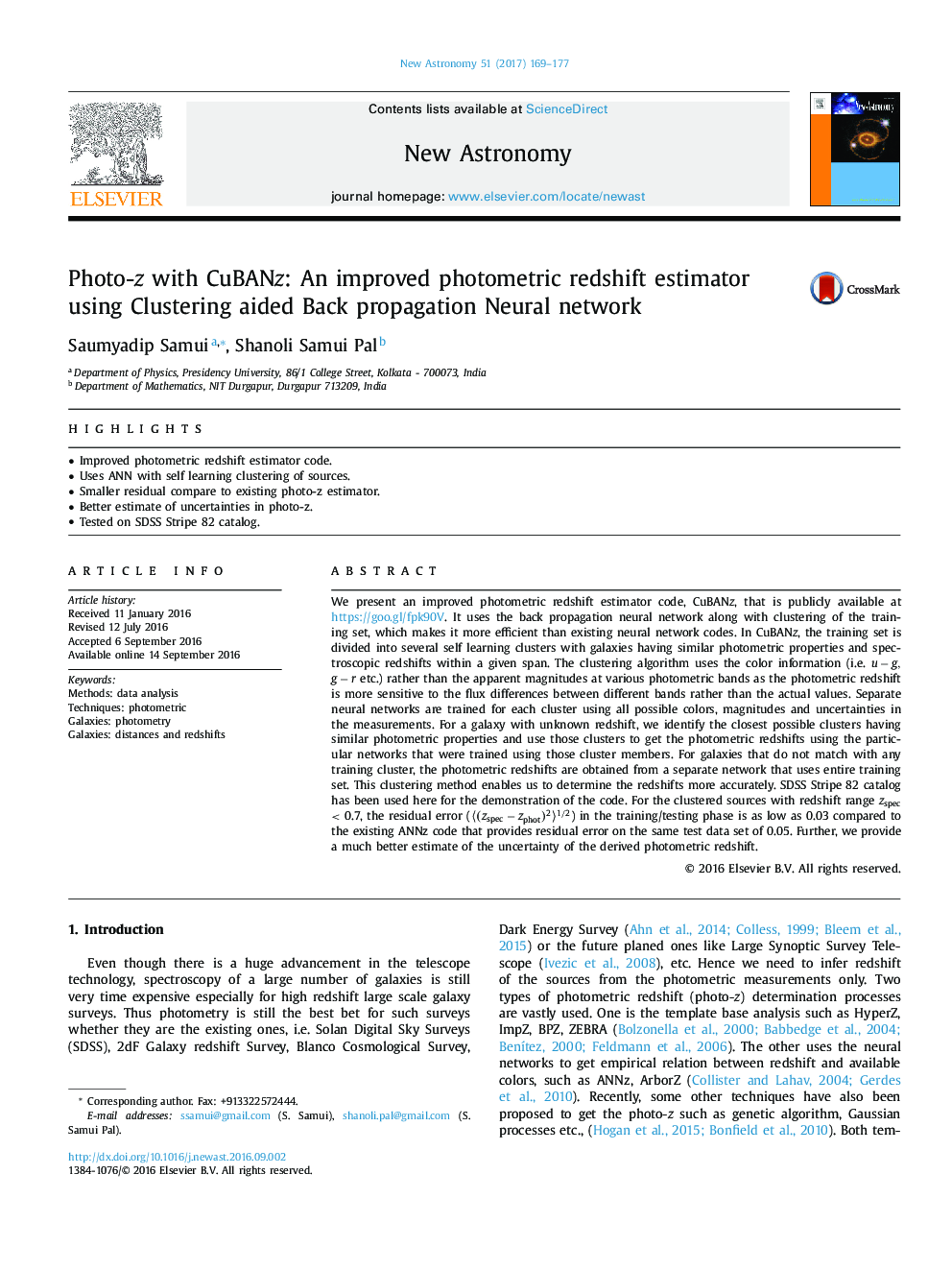| Article ID | Journal | Published Year | Pages | File Type |
|---|---|---|---|---|
| 8141456 | New Astronomy | 2017 | 9 Pages |
Abstract
We present an improved photometric redshift estimator code, CuBANz, that is publicly available at https://goo.gl/fpk90V. It uses the back propagation neural network along with clustering of the training set, which makes it more efficient than existing neural network codes. In CuBANz, the training set is divided into several self learning clusters with galaxies having similar photometric properties and spectroscopic redshifts within a given span. The clustering algorithm uses the color information (i.e. uâg,gâr etc.) rather than the apparent magnitudes at various photometric bands as the photometric redshift is more sensitive to the flux differences between different bands rather than the actual values. Separate neural networks are trained for each cluster using all possible colors, magnitudes and uncertainties in the measurements. For a galaxy with unknown redshift, we identify the closest possible clusters having similar photometric properties and use those clusters to get the photometric redshifts using the particular networks that were trained using those cluster members. For galaxies that do not match with any training cluster, the photometric redshifts are obtained from a separate network that uses entire training set. This clustering method enables us to determine the redshifts more accurately. SDSS Stripe 82 catalog has been used here for the demonstration of the code. For the clustered sources with redshift range zspec < 0.7, the residual error (ã(zspecâzphot)2ã1/2) in the training/testing phase is as low as 0.03 compared to the existing ANNz code that provides residual error on the same test data set of 0.05. Further, we provide a much better estimate of the uncertainty of the derived photometric redshift.
Keywords
Related Topics
Physical Sciences and Engineering
Physics and Astronomy
Astronomy and Astrophysics
Authors
Saumyadip Samui, Shanoli Samui Pal,
